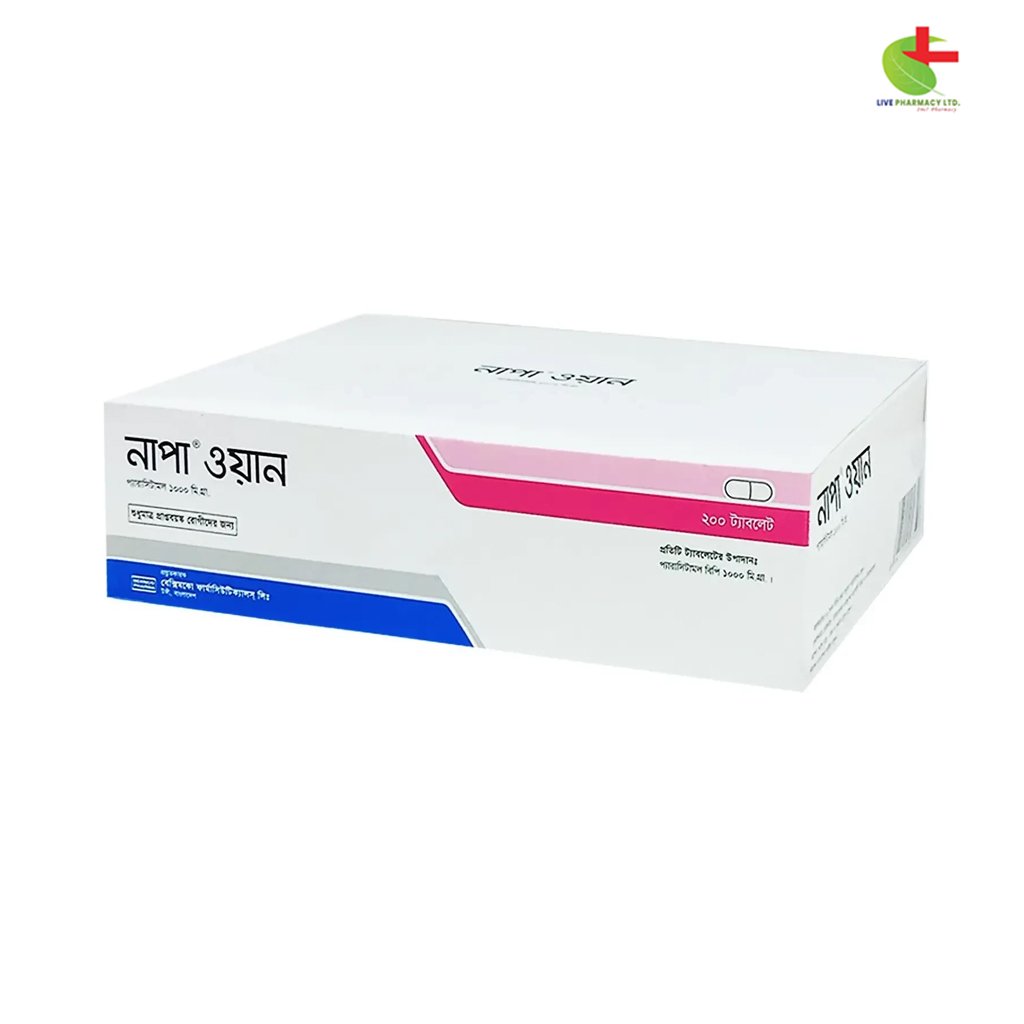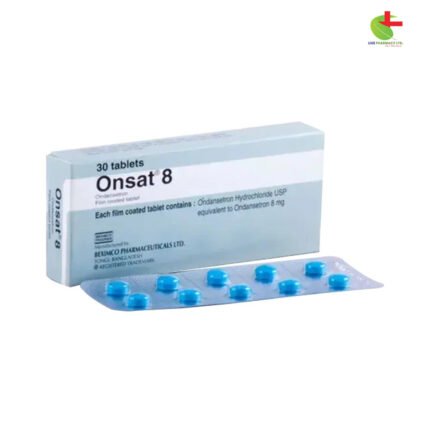Napa One 1000
22.50৳ Strip
- Effective Relief: Alleviates fever, headaches, body aches, and inflammation.
- Active Ingredient: Contains Paracetamol for quick, safe, and well-tolerated relief.
- Versatile Forms: Available as tablets, syrup, suppositories, and drops for various needs.
- Usage Advice: Follow dosage instructions carefully and consult a healthcare provider for personalized guidance.
 Brand
Brand
|
Beximco Pharmaceuticals Ltd |
|---|---|
 Generics
Generics
|
Paracetamol |
 Type
Type
|
Tablet |
Indications:
Napa One is designed to alleviate a wide range of symptoms including fever, common colds, influenza, headaches, toothaches, earaches, body aches, myalgia, neuralgia, dysmenorrhea, sprains, colic pain, back pain, post-operative discomfort, postpartum pain, inflammation-related pain, and post-vaccination pain in children. Additionally, it is effective for managing rheumatic and osteoarthritic pain, as well as joint stiffness.
Pharmacology:
Paracetamol, known for its analgesic and antipyretic properties, exhibits minimal anti-inflammatory effects. It primarily works in the central nervous system (CNS) by raising the pain threshold and inhibiting cyclooxygenase (COX-1, COX-2, and COX-3) enzymes involved in prostaglandin (PG) synthesis. Paracetamol, a para-aminophenol derivative, is celebrated for being a fast-acting, safe analgesic with fewer side effects compared to aspirin.
Dosage & Administration:
- Tablets:
- Adults: 1-2 tablets every 4 to 6 hours, with a maximum of 4 grams (8 tablets) daily.
- Children (6-12 years): ½ to 1 tablet 3 to 4 times daily, not exceeding 2.6 grams per day for long-term use.
- Extended Release Tablets:
- Adults & Children over 12 years: 2 tablets every 6 to 8 hours (maximum of 6 tablets per 24 hours). Tablets must be swallowed whole.
- Syrup/Suspension:
- Children under 3 months: 10 mg/kg body weight (or 5 mg/kg if jaundiced), 3 to 4 times daily.
- 3 months to under 1 year: ½ to 1 teaspoonful, 3 to 4 times daily.
- 1-5 years: 1-2 teaspoonfuls, 3 to 4 times daily.
- 6-12 years: 2 teaspoonfuls, 3 to 4 times daily.
- Adults: 4-8 teaspoonfuls, 3 to 4 times daily.
- Suppositories:
- Children 3-12 months: 60-120 mg, 4 times daily.
- Children 1-5 years: 125-250 mg, 4 times daily.
- Children 6-12 years: 250-500 mg, 4 times daily.
- Adults & Children over 12 years: 0.5-1 gram, 4 times daily.
- Pediatric Drops:
- Up to 3 months: 0.5 ml (40 mg)
- 4 to 11 months: 1.0 ml (80 mg)
- 1 to 2 years: 1.5 ml (120 mg). Limit to 5 doses daily for a maximum of 5 days.
- Paracetamol Tablets with Actizorb Technology:
- Adults and children (12 years and older): Take 1 to 2 tablets every 4 to 6 hours as needed, with a maximum of 8 tablets in 24 hours.
- Children (7 to 11 years): Take ½ to 1 tablet every 4 to 6 hours as needed, with a maximum of 4 tablets in 24 hours. Not recommended for children under 7 years.
Follow your doctor’s advice when taking medication.
Interactions:
Concurrent use of barbiturates, tricyclic antidepressants, or alcohol may impair the metabolism of large doses of Napa One. Alcohol, in particular, can exacerbate liver toxicity from an overdose. Long-term use of anticonvulsants or oral contraceptives can induce liver enzymes, potentially affecting the effectiveness of Napa One by increasing metabolism or clearance.
Contraindications:
Napa One should not be used by individuals with known hypersensitivity to Paracetamol.
Side Effects:
Napa One is generally well-tolerated, but side effects can include mild hematological reactions such as thrombocytopenia, leucopenia, pancytopenia, neutropenia, and agranulocytosis. Occasionally, users may experience skin rashes or other allergic reactions.
Pregnancy & Lactation:
Human studies indicate that Paracetamol, when used as directed, does not pose significant risks during pregnancy. However, it is advisable to consult a doctor. Paracetamol is present in breast milk in minimal amounts and does not contraindicate breastfeeding.
Precautions & Warnings:
Use Napa One with caution in patients with severe renal or hepatic impairment. The risk of overdose is heightened in individuals with non-cirrhotic alcoholic liver disease. Do not exceed the recommended dosage and avoid concurrent use of other Paracetamol-containing products. Napa One should only be used by the prescribed individual as needed.
Overdose Effects:
Exceeding 10 grams of Napa One can cause liver damage. Risk factors include long-term use of liver enzyme-inducing drugs, excessive alcohol consumption, or conditions that deplete Glutathione. Symptoms of overdose within 24 hours may include pallor, nausea, vomiting, anorexia, and abdominal pain. Severe cases may progress to liver failure, encephalopathy, hemorrhage, hypoglycemia, cerebral edema, and potentially death. Immediate treatment is crucial, and activated charcoal may be used if within 1 hour of ingestion. N-acetylcysteine can be administered up to 24 hours post-ingestion, with the highest efficacy within 8 hours. Consult a liver specialist for severe cases beyond this period.
Therapeutic Class:
Non-opioid analgesics.
Storage Conditions:
Store in a dry place, protected from light and heat. Keep out of reach of children.













Reviews
There are no reviews yet.